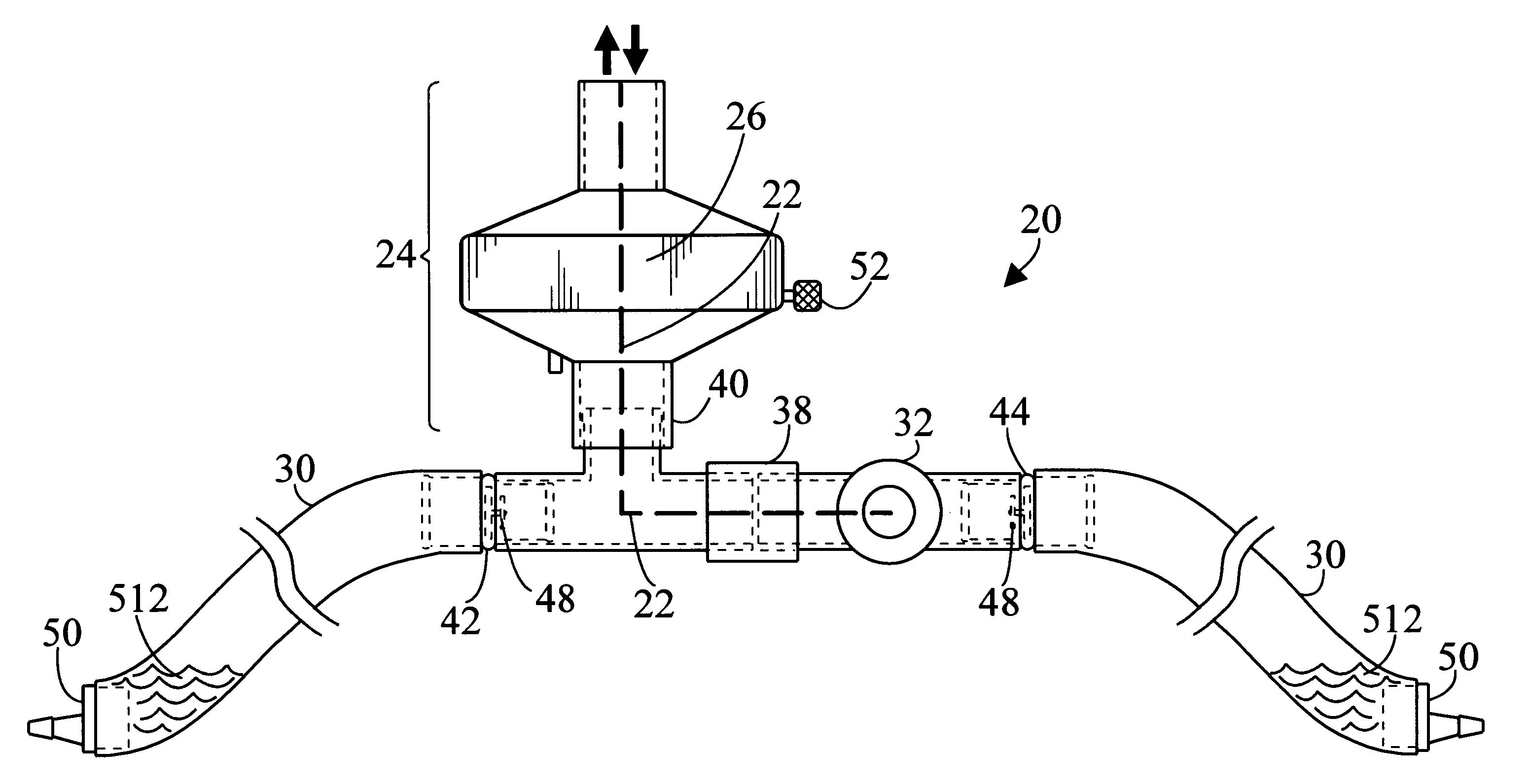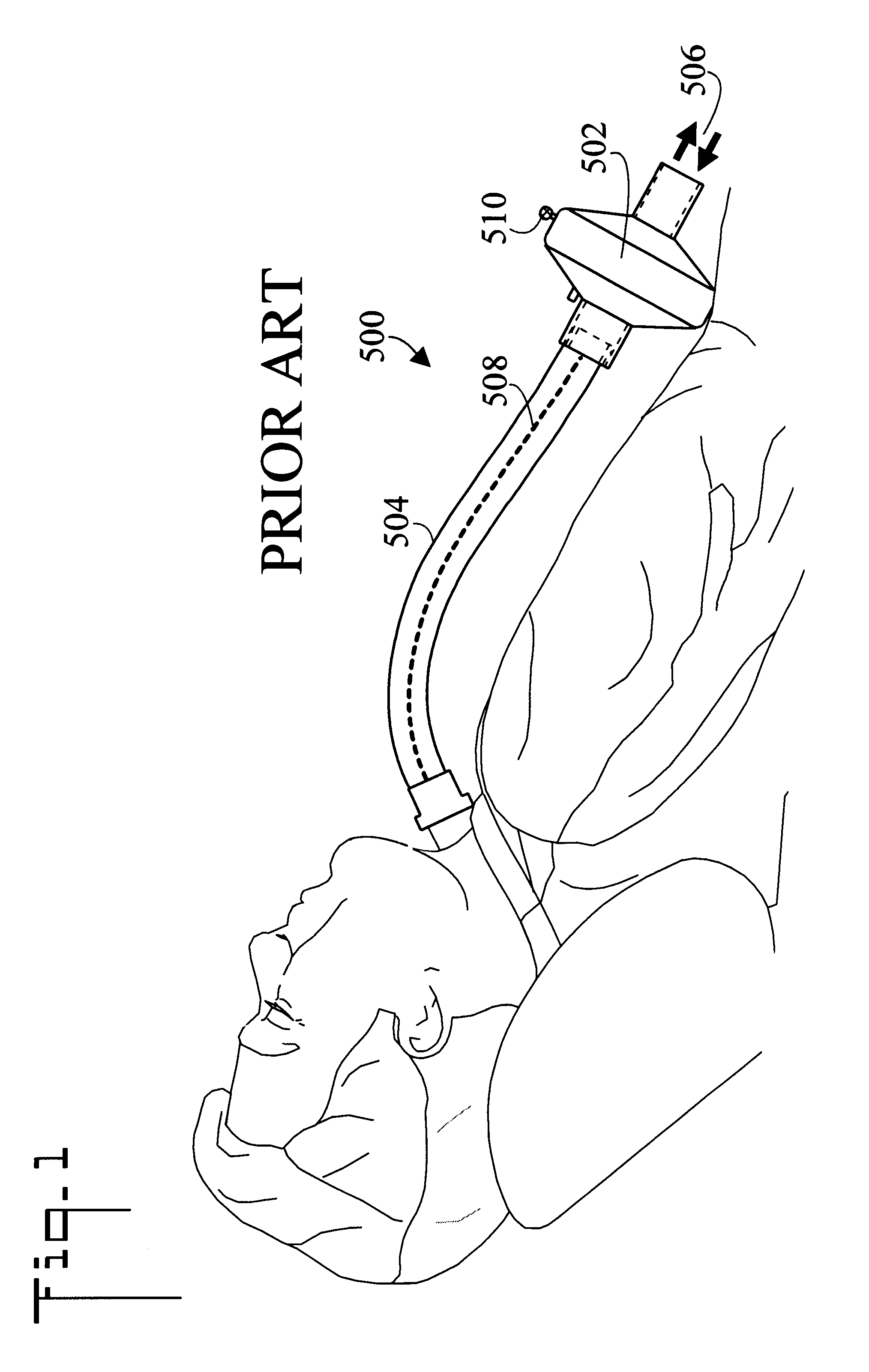Method of breathing tracheally
a tracheal humidification and tracheal tube technology, applied in the field of tracheal humidification system improvement, can solve the problems of increased patient care costs, inability to overcome hereditary drawbacks, and patient exposure to airborne and contact sources, so as to increase resistance and make breathing difficul
- Summary
- Abstract
- Description
- Claims
- Application Information
AI Technical Summary
Benefits of technology
Problems solved by technology
Method used
Image
Examples
Embodiment Construction
Referring initially to FIGS. 2-4, and 8, there are illustrated side elevation, top plan, end elevation, and reduced perspective views respectfully of a tracheal humidification system in accordance with the present invention, generally designated as 20. Tracheal humidification system 20 includes a breathing path 22 (shown by a heavy dashed line) having an uppermost portion 24 which is oriented in a substantially vertical position. The patient breathes in and out through breathing path 22. The uppermost portion 24 includes a filter 26 and filter housing. The tracheal humidification system 20 also includes at least one secretion path 28 (shown in a heavy dotted line in FIGS. 5-7). In a preferred embodiment two bilateral secretion paths 28 are utilized which include two flexible drain tubes 30. The flexible drain tube portion 30 of the secretion path 28 is downwardly oriented so as to collect and capture the secretions 512. In the shown in use configuration, filter 26 is disposed above ...
PUM
 Login to View More
Login to View More Abstract
Description
Claims
Application Information
 Login to View More
Login to View More - R&D
- Intellectual Property
- Life Sciences
- Materials
- Tech Scout
- Unparalleled Data Quality
- Higher Quality Content
- 60% Fewer Hallucinations
Browse by: Latest US Patents, China's latest patents, Technical Efficacy Thesaurus, Application Domain, Technology Topic, Popular Technical Reports.
© 2025 PatSnap. All rights reserved.Legal|Privacy policy|Modern Slavery Act Transparency Statement|Sitemap|About US| Contact US: help@patsnap.com



